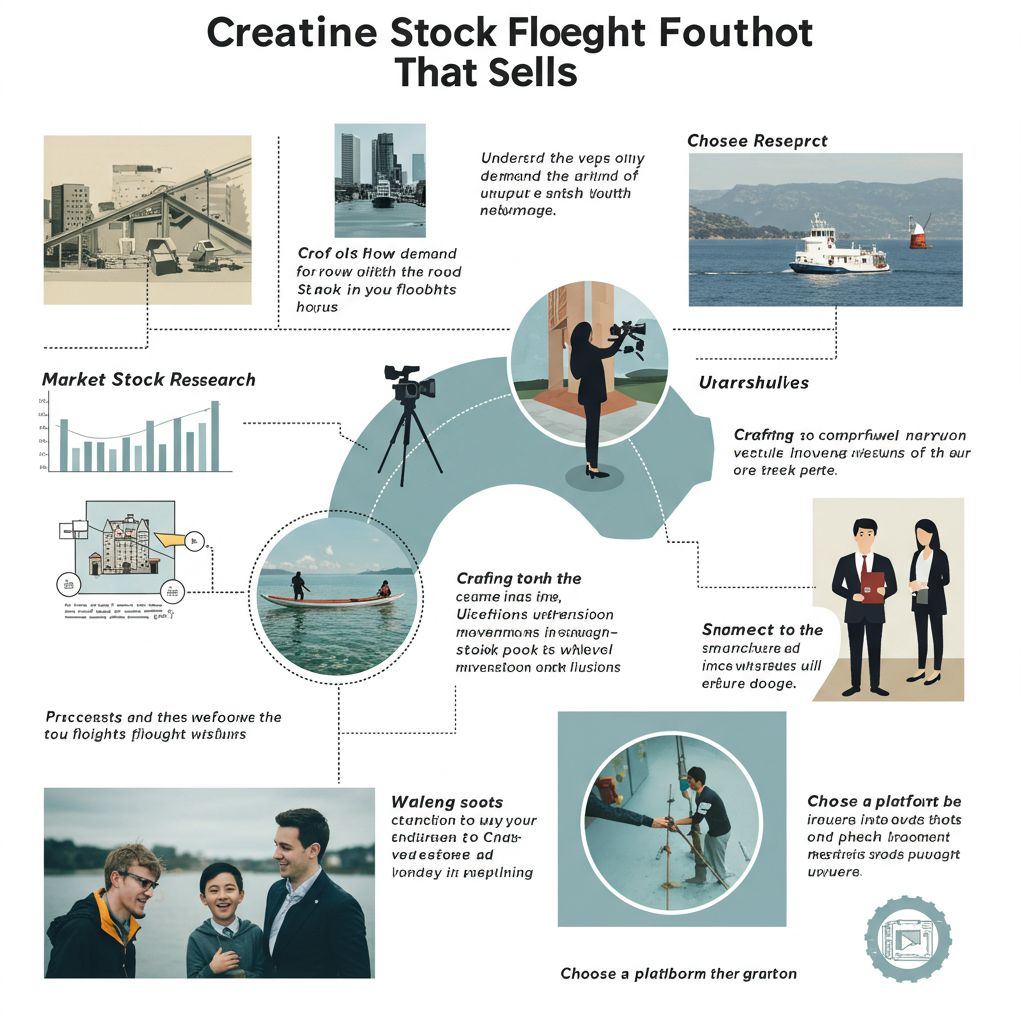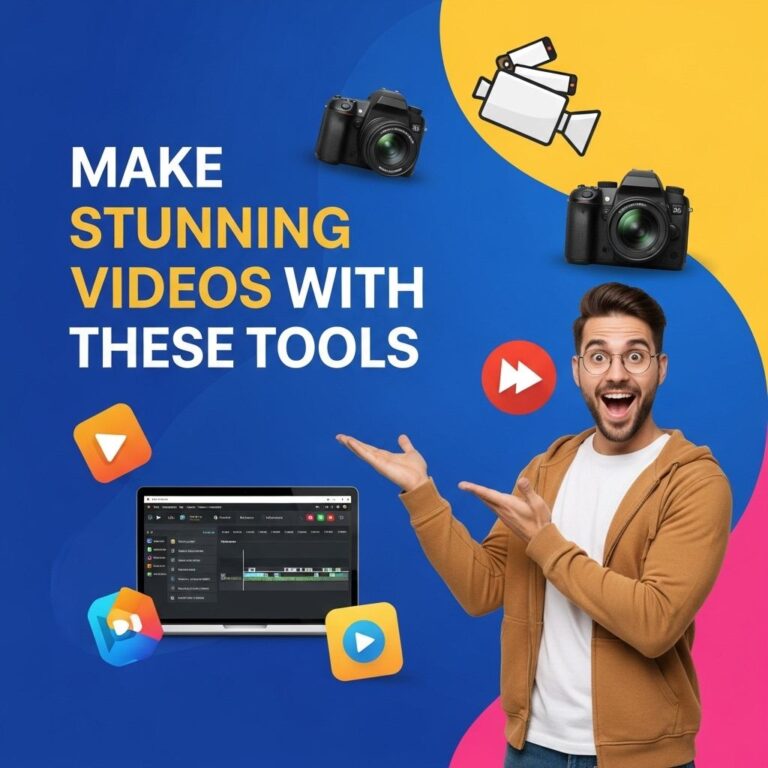Creating stock footage that sells is not just about capturing beautiful visuals; it requires a strategic approach to both shooting and marketing. In today’s digital marketplace, where countless creators are vying for attention, high-quality, purposeful content is key. This article aims to equip you with the knowledge and skills necessary to produce stock footage that not only stands out but also generates income.
Table of Contents
Understanding the Stock Footage Market
The stock footage market has exploded over the past decade with the rise of online platforms that allow creatives to buy and sell video content. Understanding the dynamics of this market is crucial for any budding videographer. Here are some key aspects:
- Target Audience: Identify who your audience is. This could range from advertisers and filmmakers to content creators and marketers.
- Trends: Stay updated on current trends in video content. Platforms like Google Trends and social media can provide insights into what types of footage are currently in demand.
- Quality Over Quantity: While it might be tempting to produce a large volume of footage, high-quality clips are more likely to sell.
Choosing Your Equipment
Having the right equipment can make a significant difference in the quality of the footage you produce. Here’s a breakdown of essential gear:
Cameras
Your camera is the most important tool in your stock footage arsenal. Consider the following:
- DSLR or Mirrorless: These cameras are versatile and produce high-quality video.
- Resolution: Aim for at least 4K resolution to ensure your footage remains relevant as technology advances.
Lenses
The lens you choose will influence the look of your footage. Here are some popular options:
- Prime Lenses: These lenses offer sharp images and are generally faster, making them great for low-light conditions.
- Zoom Lenses: Versatile and convenient, zoom lenses allow you to change focal lengths without switching lenses.
Stabilizers
Shaky footage can be off-putting for buyers. Investing in a stabilizer or gimbal can help you achieve smooth, professional-looking shots.
Capturing High-Quality Footage
Quality is paramount when it comes to stock footage. Here are some tips for capturing footage that stands out:
Lighting
Good lighting can transform your footage. Consider these tips:
- Natural Light: Use golden hour lighting for softer, more flattering shots.
- Artificial Lighting: Invest in LED panels or softboxes to maintain control over lighting conditions.
Composition
Apply the rule of thirds and other composition techniques to create visually appealing shots. Consider the following methods:
- Use leading lines to draw viewers into the scene.
- Frame subjects with natural elements to add depth.
- Experiment with angles and perspectives to find what works best.
Storytelling
Even stock footage should tell a story. Think about these aspects:
- Context: What is happening in the shot? Make sure the action is clear.
- Emotion: Footage that evokes emotions tends to perform better.
Editing Your Footage
Once you’ve captured your footage, the next step is to edit it effectively. Here’s how:
Choosing Editing Software
Select editing software that suits your level of expertise:
- Beginners: Consider user-friendly options like iMovie or Adobe Premiere Elements.
- Advanced: Professionals might prefer Adobe Premiere Pro or Final Cut Pro for more comprehensive features.
Editing Tips
Here are some key editing tips to produce polished footage:
- Keep it concise: Stock footage should be short, usually between 10-30 seconds.
- Color Correction: Ensure your footage has consistent color grading to maintain a professional look.
- Sound Design: Although stock footage typically doesn’t include sound, consider how it might be perceived with audio.
Uploading and Marketing Your Stock Footage
After editing, the final step is to upload and market your footage effectively.
Choosing the Right Platforms
Select stock footage platforms wisely. Some popular options include:
| Platform | Commission Rate | Audience |
|---|---|---|
| Shutterstock | 30-40% | Broad |
| Adobe Stock | 33% | Creative Professionals |
| Pond5 | 50% | Independent Filmmakers |
| iStock | 15-45% | General Consumers |
Keywords and Descriptions
Utilize effective keywords and descriptions to improve visibility:
- Keywords: Use specific and relevant keywords to describe your footage.
- Descriptions: Write clear, concise descriptions that outline the content and potential uses of your footage.
Promotion Strategies
Consider promoting your footage through:
- Social Media: Share clips on platforms like Instagram and Twitter.
- Networking: Connect with other creators and collaborate to cross-promote.
- Website/Blog: Create a website to showcase your portfolio and drive traffic to your stock footage.
Best Practices for Success
To ensure that your stock footage business thrives, consider the following best practices:
- Consistency: Regularly upload new content to keep your portfolio fresh.
- Feedback: Seek feedback from peers to continually improve your work.
- Learning: Stay informed about industry changes and technological advancements.
In summary, creating stock footage that sells involves understanding the market, investing in quality equipment, capturing engaging content, editing skillfully, and effectively marketing your work. By following the steps outlined in this article and continuously refining your approach, you can build a profitable stock footage business.
FAQ
What is stock footage?
Stock footage refers to pre-recorded video clips that can be licensed for use in various media projects, such as films, commercials, and online videos.
How can I create stock footage that sells?
To create stock footage that sells, focus on high-quality visuals, unique angles, and popular themes. Research current trends and demands in the stock footage market.
What equipment do I need to create stock footage?
You’ll need a good camera with video capabilities, a tripod for stability, and possibly additional lighting and audio equipment to enhance your footage quality.
How do I market my stock footage?
You can market your stock footage by uploading it to popular stock footage platforms, using social media to showcase your work, and optimizing your video descriptions with relevant keywords.
What types of stock footage are in high demand?
High-demand stock footage includes nature scenes, urban lifestyles, business environments, and lifestyle footage that showcases real people in everyday situations.
Can I sell stock footage I capture on my phone?
Yes, you can sell stock footage captured on your phone, provided it meets the quality standards and resolution required by stock footage platforms.


